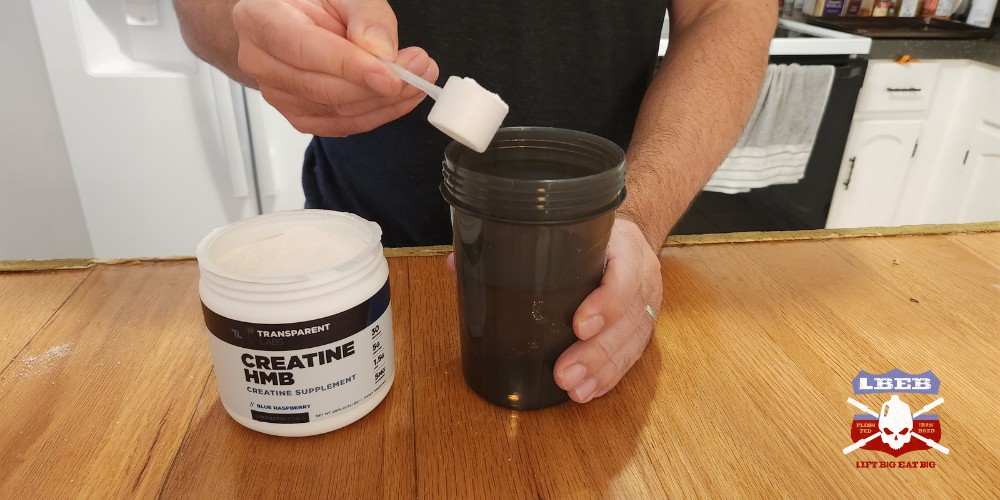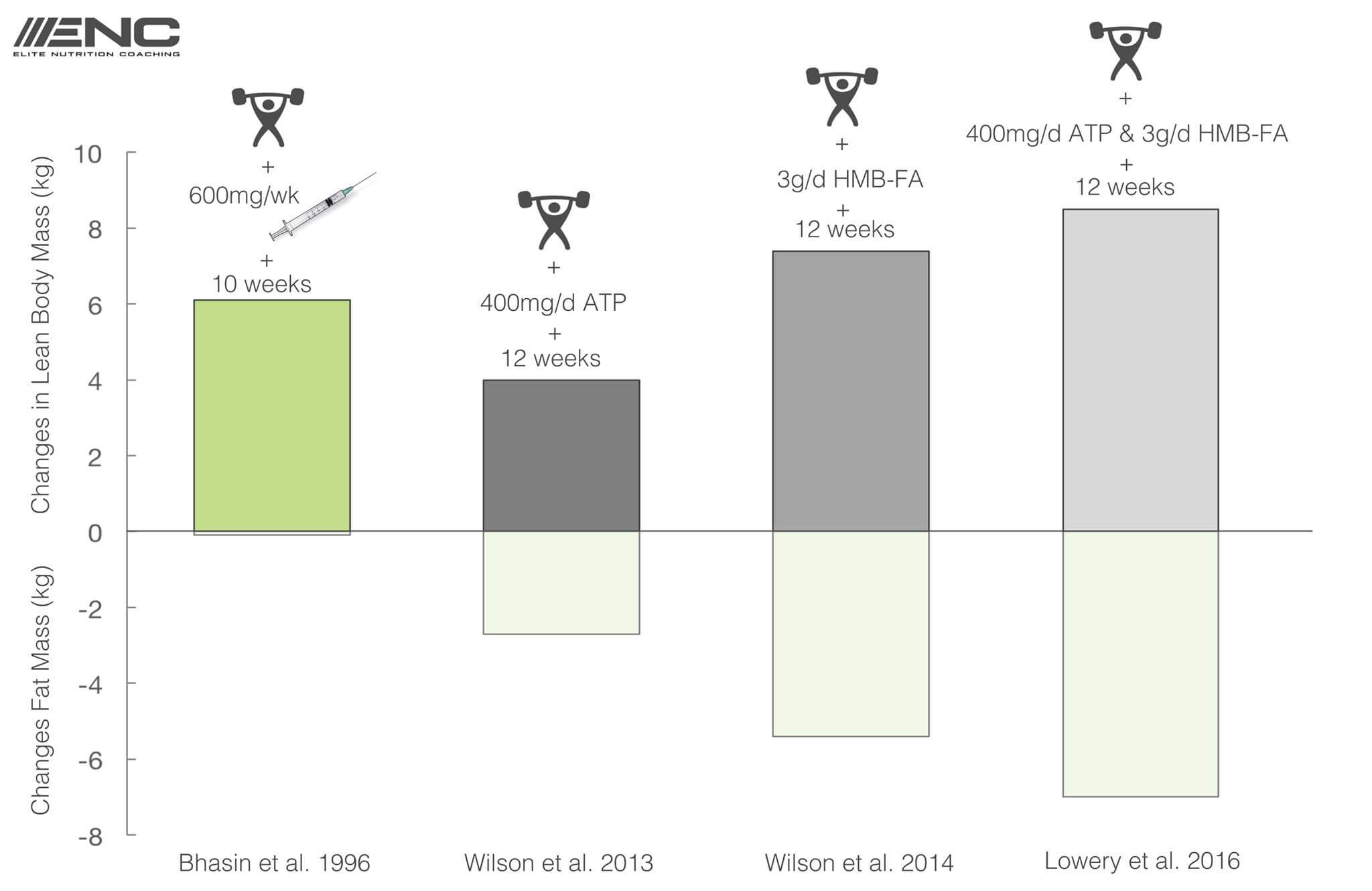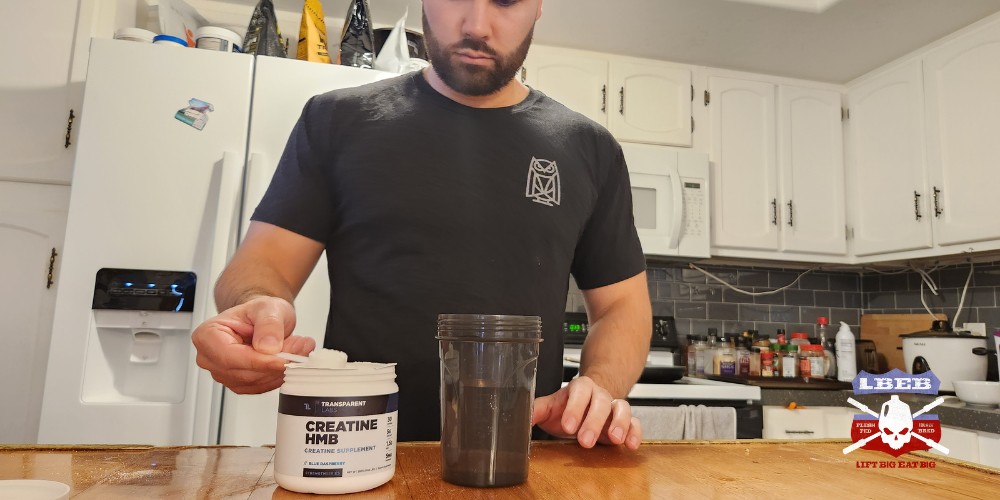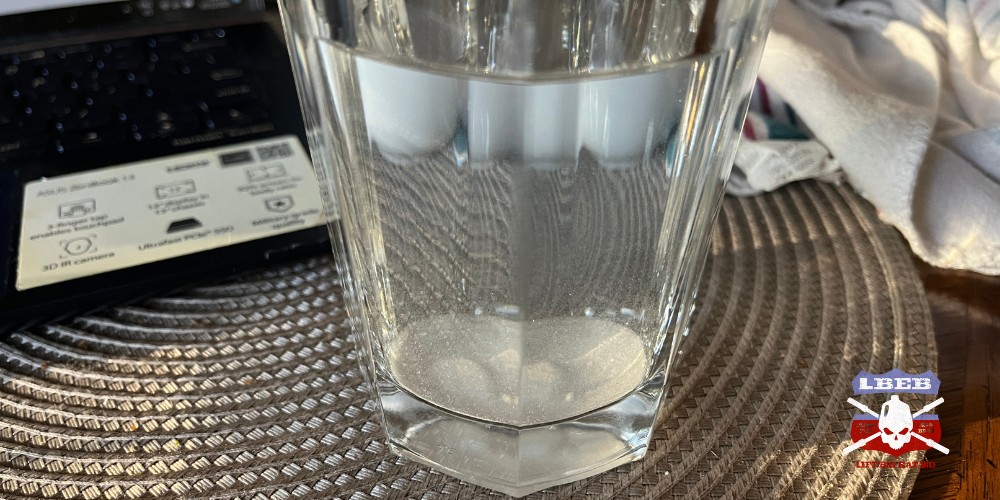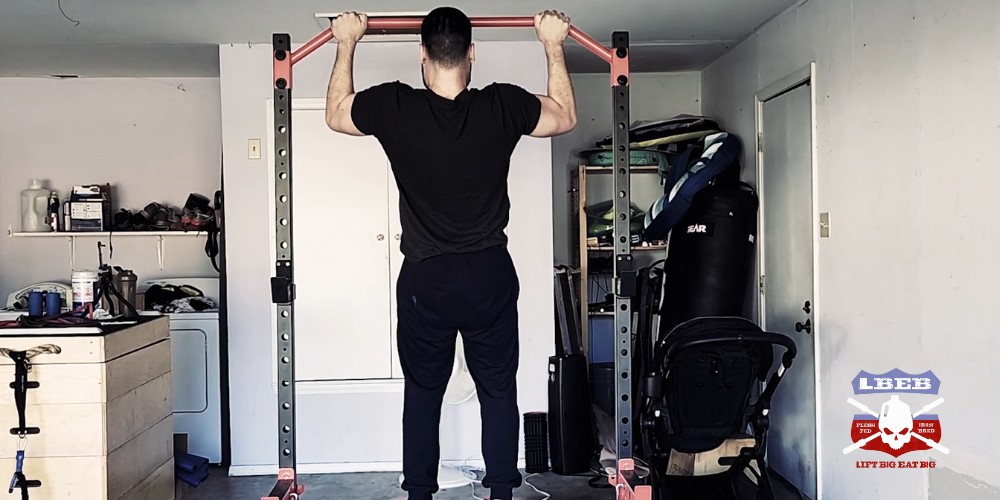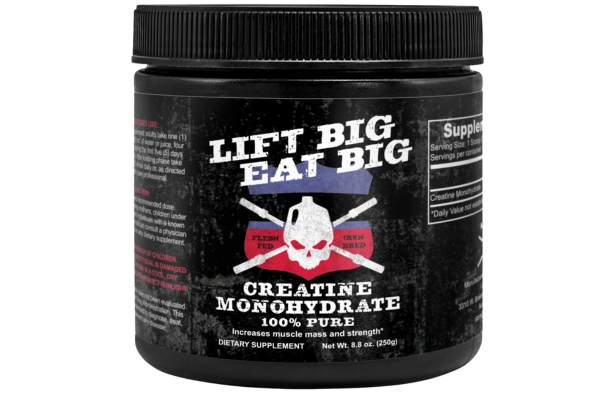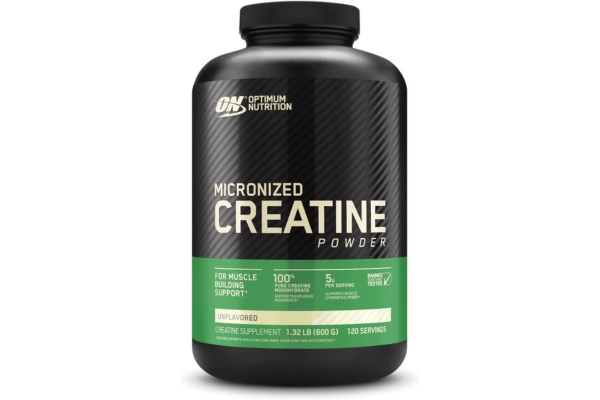Creatine is making a comeback in mainstream fitness. I'm not sure why, but I'm here for it. I've been taking creatine for over 10 years and have tried many brands.
In my opinion, it doesn't matter which creatine you get as long as it's creatine monohydrate and doesn't contain contaminants or banned substances.
Transparent Labs already ticks these boxes, but they've also added a few other ingredients to boost your gains in the gym. Are they worth the price?
Table of Contents
Transparent Labs Creatine HMB Formulation
Ingredient | Dose |
|---|---|
Creatine Monohydrate | 5 g |
HMB | 1.5 g |
BioPerine | 5 mg |
Vitamin D | 500 IU |
Pros
Cons
Quality
Flavor
Mixability
Cost
Transparent Labs Creatine HMB
Transparent Labs Creatine HMB Review
Ingredients
Transparent Labs uses third-party tested ingredients to ensure their supplements are safe and contain what it says on the label. Their Certificate of Analysis (CoA) shows no contaminants like heavy metals.
They also have a Certificate of Composition showing the breakdown of their formulas. The creatine monohydrate and HMB breaks down like this:
It means for sure there are no other filler ingredients added to their formula. Regarding the creatine, it's not the gold standard Creapure, which is 99.9% pure.
But that doesn’t mean they don’t use a pure creatine monohydrate, and since it’s third-party tested, it’ll give you the same potency.
The addition of HMB is unique to the creatine industry. But it’s not without controversy. HMB came to the market with a bang, with many studies suggesting it builds more muscle and enhances muscle recovery.
Leading protein and exercise researcher Dr. Stuart Philips had these comments to say on Twitter (X):
HMB still largely useless as a supplement. Thanks to Filipe Teixeira for his work and for allowing me to participate in this important work to help people save money and not spend it on useless supplements.... https://t.co/OzxEsaGbjf
— Stuart Phillips (he/him) (@mackinprof) December 27, 2018
For good reason. The study that put HMB on the map is a 2014 paper by Dr. Jacob Wilson et al. and a follow-up by Lowery and colleagues in 2016 [1][2]. There are multiple issues with these studies.
We can start with the funding. It’s funded by Metabolic Technologies Inc. This company developed multiple patented HMB supplements that supplement companies use. At the time, it was CellTech.
It's not the funding that is the primary issue. These studies don't get done without funding from supplement companies as no university or donor will fund a random supplement study and would rather fund more critical, life-saving research.
It's the fact 3 Metabolic Technologies Inc. employees were authors of this study, which is a red flag for conflict of interest.
But that's not all. The results of these studies will blow your mind. This handy graph by Elite Nutrition Coaching illustrates my point.
Here’s how to interpret this. The 1996 study on the very left shows a 6 kg increase in lean body mass after 10 weeks of training and using exogenous testosterone (aka steroids).
On the right are 3 studies using HMB, ATP, or both supplements. Apparently, HMB and ATP lead to similar or greater gains in lean mass than steroids. Why doesn't the World Anti-Doping Agency ban HMB, then?
Why isn’t every professional sporting organization making HMB a mandatory supplement? Because these results are too good to be true.
Dr. Stuart Philips and a cast of top Ph.D. nutritionists replied with a statement regarding many of the results in the Lowery and Wilson papers [3].
For starters, there were consistent improvements across all subjects in the groups regarding increases in muscle mass, yet different rates of muscle gain are often observed in hypertrophy studies.
Further, the placebo group who consumed an optimal protein intake didn't respond to the overreaching hypertrophy training phase.
Finally, the selection criteria for subjects was not clear as they stated they picked "a responsive population who possess lean mass from previous resistance training." This tells us nothing about the participants.
Dr. Stuart Philips also published a systematic review investigating HMB and its effects on promoting muscle gain or mitigating muscle loss in aging and clinical populations [4].
Most reviews found no effect or inconclusive evidence to determine an effect on muscle mass, no positive effect on physical function, and no effect on strength.
While there’s no harm in having HMB in the creatine supplement, you’re paying for an extra ingredient that potentially does nothing.
Lastly, BioPerine is a patented and trademarked substance claimed to improve the absorption of nutrients [5]. It’s debatable whether there’s much of an effect.
Some research suggests that BioPerine may enhance iron absorption and other nutrients. Regardless, it doesn't hurt to have it in the supplement.
Dosage
One serving provides 5 g of creatine monohydrate which is the recommended daily dose to maximally saturate the muscles.
Interestingly, the HMB dose is half of what was used in these landmark studies referenced in the ingredients section.
Regardless, creatine is the supplement that matters in this formulation, and that is dosed correctly.
Third-Party Testing
Third-party testing and the informed sport tick are mandatory for competitive athletes subject to random drug tests.
There are too many stories of athletes popping positive drug tests because of tainted supplements (or it's often used as an excuse).
Having the informed sport tick means every batch has been third-party tested for contaminants that could cause a positive drug test. Taking supplements that don't have this tick is a risk to your athletic career.
Flavor
Transparent Labs creatine is flavored naturally and uses Stevia to sweeten it. I don't usually like the taste of Stevia, but in this formula, it tastes great.
I have the blue raspberry flavor and if you've had any other blue raspberry flavored supplement before, it tastes identical.
You have 14 flavors to choose from, including unflavored.
Mixability
Pure creatine never mixes well on its own in water. This creatine and HMB supplement mixes better than others, but you'll still have to swish or shake it between each sip.
If you have the unflavored version, you can mix it in your protein smoothies, which will help it mix.
Price
Transparent Labs creatine is more expensive at $1.67 per serving. Compare this to Lift Big Eat Big creatine, which is half the price at $0.80 per serving, and Optimum Nutrition creatine at $0.39 per serving.
Remember that these alternatives are plain creatine monohydrate, whereas Transparent Labs has other ingredients and flavors.
Who Should Buy Transparent Labs Creatine HMB
Because of the price and extra ingredients, Transparent Labs Creatine with HMB isn’t for everyone. Here’s who it is best suited for.
Competitive Athlete Subject To Drug Tests
Competitive athletes must look for the informed sport tick. It means each batch is third-party tested for substances that can get you banned from your sport. The last thing you want is a positive drug test from tainted supplements.
Lifters Wanting To Gain Muscle
Any creatine monohydrate saturates the muscle cells and enhances strength and muscle size. But if you want to spend a little extra to take advantage of HMB's potential positive effects, you may opt for this creatine supplement.
Biohacking Experimenters
The same premise goes for biohackers or health optimizers. While the HMB data seems to be skewed, those looking to optimize their health and gym gains may want to experiment with the added HMB and BioPerine to see if it makes a difference.
Transparent Labs Creatine Alternatives
So, you’ve read this review and decided Transparent Labs creatine isn’t for you. That’s okay. Here are a few alternatives to consider:
Lift Big Eat Big 100% Pure Creatine Monohydrate
It’s flavorless and has no other ingredients. It’s pure creatine monohydrate. However, we do not have an informed sport tick.
Lift Big Eat Big 100% Pure Creatine Monohydrate
Optimum Nutrition Micronized Creatine Monohydrate
Optimum Nutrition Micronized Creatine Monohydrate
Is Transparent Labs Creatine Better Than Creatine Monohydrate?
No, Transparent Labs creatine is not better than creatine monohydrate. It is creatine monohydrate, so it is on the same level. The fact it has HMB and BioPerine may help further support muscle gain, but it is highly unlikely.
Is Transparent Labs Creatine Worth It?
Transparent Labs creatine is worth it if you want a tasty flavored supplement with other ingredients that may further enhance strength and size. You're better off choosing an alternative if you're solely looking for pure creatine.
The informed sport tick is one big upside, so you know you're safe from positive drug tests.
Transparent Labs Creatine HMB
References
1. Wilson, J. M., Lowery, R. P., Joy, J. M., Andersen, J. C., Wilson, S. M., Stout, J. R., ... & Rathmacher, J. (2014). The effects of 12 weeks of beta-hydroxy-beta-methylbutyrate free acid supplementation on muscle mass, strength, and power in resistance-trained individuals: a randomized, double-blind, placebo-controlled study. European journal of applied physiology, 114, 1217-1227.
2. Lowery, R. P., Joy, J. M., Rathmacher, J. A., Baier, S. M., Fuller Jr, J. C., Shelley, M. C., ... & Wilson, J. M. (2016). Interaction of beta-hydroxy-beta-methylbutyrate free acid and adenosine triphosphate on muscle mass, strength, and power in resistance trained individuals. The Journal of Strength & Conditioning Research, 30(7), 1843-1854.
3. Phillips, S. M., Aragon, A. A., Arciero, P. J., Arent, S. M., Close, G. L., Hamilton, D. L., ... & Willoughby, D. S. (2017). Changes in Body Composition and Performance With Supplemental HMB‐FA+ ATP. The Journal of Strength & Conditioning Research, 31(5), e71-e72.
4. Phillips, S. M., Lau, K. J., D'Souza, A. C., & Nunes, E. A. (2022). An umbrella review of systematic reviews of β‐hydroxy‐β‐methyl butyrate supplementation in ageing and clinical practice. Journal of Cachexia, Sarcopenia and Muscle, 13(5), 2265-2275.
5. Fernández-Lázaro, D., Mielgo-Ayuso, J., Córdova Martínez, A., & Seco-Calvo, J. (2020). Iron and physical activity: Bioavailability enhancers, properties of black pepper (bioperine®) and potential applications. Nutrients, 12(6), 1886.

